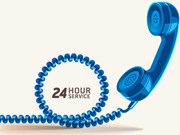
Lithium-Ion 18650 Battery Charging Safety: Charger Selection, Charging Duration, and Abnormal Situation Handling
Release time:2025-10-14 Click:67
The 18650 lithium-ion battery is one of the most widely used power sources in modern devices — from flashlights and laptops to power banks and electric vehicles.
Its high energy density and long cycle life make it reliable, but improper charging can lead to overheating, leakage, or even fire.
To ensure safety, users should understand three core aspects: charger selection, charging duration control, and abnormal situation handling.
Choosing the right charger is the first step to preventing battery accidents. Using incompatible or low-quality chargers can easily cause voltage mismatch or overheating.
Voltage: Standard 18650 batteries operate at 3.7V nominal and 4.2V (or 4.35V) full charge.
Avoid chargers exceeding 4.35V output to prevent internal damage or thermal runaway.
Current:
Use between 0.5C–1C charging current, where “C” is battery capacity.
Example: For a 2000mAh (2Ah) cell, 1A–2A is recommended.
Higher than 1C shortens lifespan and increases overheating risk.

Avoid cheap, unbranded chargers lacking protection features. Instead, select chargers with:
OCP (Over-Current Protection)
OVP (Over-Voltage Protection)
SCP (Short-Circuit Protection)
Temperature Monitoring — advanced chargers reduce current if temperatures exceed 45°C (113°F).
Look for certification marks such as UL, CE, or FCC to ensure safety compliance.
Overcharging can cause electrolyte decomposition and gas buildup, while undercharging reduces usable capacity and lifespan.
Use this simple formula:
Charging Time (hours) ≈ Battery Capacity (Ah) ÷ Charger Current (A)
Example:
A 2Ah battery + 1A charger → ~2 hours
A 2Ah battery + 2A charger → ~1 hour
💡 Tip: Unplug within 30 minutes after full charge to prevent trickle degradation.
Even certified chargers can fail unexpectedly.
Don’t charge overnight or when away.
Place batteries on non-flammable surfaces (e.g., ceramic tiles, metal plates).
Avoid beds, carpets, or paper surfaces that may catch fire.

Despite proper precautions, abnormal charging conditions may still occur. Recognizing early signs prevents severe accidents.
Cause: Over-current, poor heat dissipation, or defective cells.
Action:
Unplug immediately.
Move battery to a ventilated, fireproof area.
Avoid touching with bare hands—use gloves or tongs.
Cause: Gas buildup due to overcharge or internal short circuit.
Action:
Stop charging immediately.
Never puncture or reuse swollen batteries.
Dispose safely at an authorized recycling center.
Cause: Electrolyte damage or broken seal.
Action:
Unplug charger, wear gloves.
Wipe with a dry cloth (avoid skin/eye contact).
Replace both battery and charger afterward.
Cause: Internal charger component failure.
Action:
Unplug immediately.
Discard the charger and inspect the battery before reusing.
Safe charging of 18650 lithium-ion batteries isn’t complicated — it simply requires attention and good habits.
Select certified, compatible chargers.
Monitor charging duration.
Respond immediately to abnormalities.
💡 Remember: It’s always better to prioritize safety over convenience. A reliable charger or a few extra minutes of supervision can prevent serious damage or injury.
Looking for customized lithium-ion battery packs or safe certified charger solutions?
Contact A&S Power — your trusted partner for advanced battery design and safety assurance.
Hot products

18650 Battery 3.7V 2600mAh Wholesale Lithium Ion Battery 500 times cycle life

18650 Li-Ion Battery 14.8V 2600mAh Lithium Ion Battery Pack with BMS

AS18500 Battery 14.8v 2000mAh Lithium-Ion Battery Pack China Manufacturer Price

Rechargeable Li-Ion Battery Packs Supplier 18650 7.4v 2000mAh UL2054 Certification
Tel:+86-0755-28169348
E-mail:aspowercell@szaspower.com
